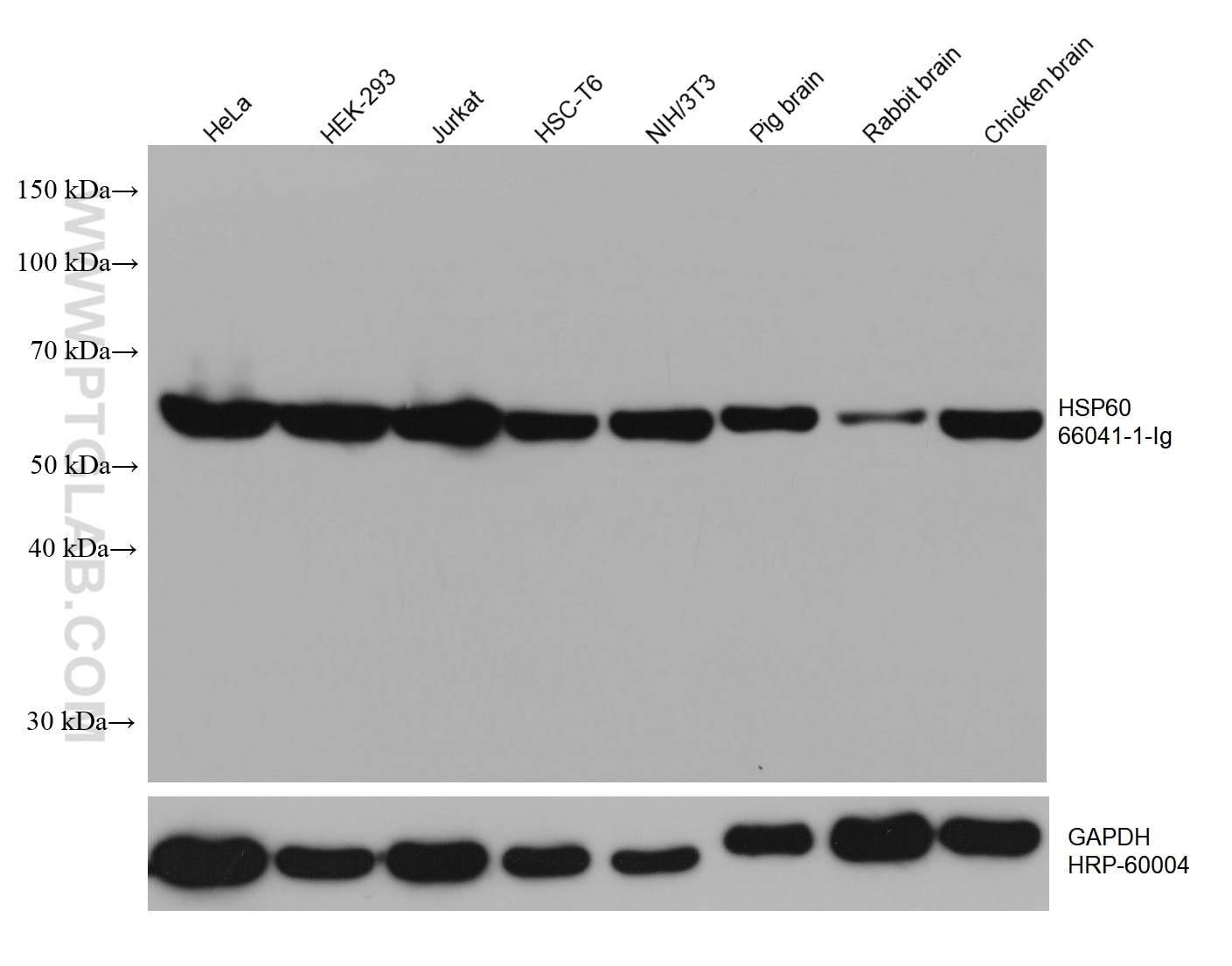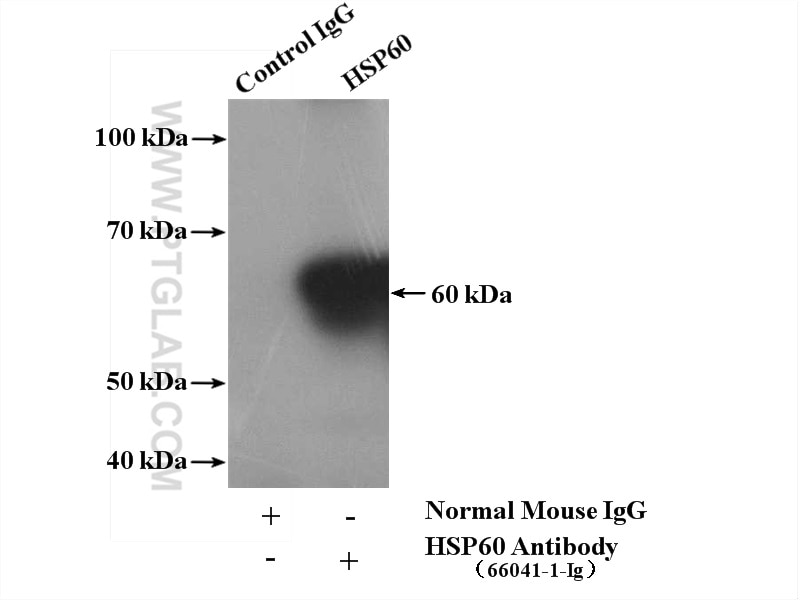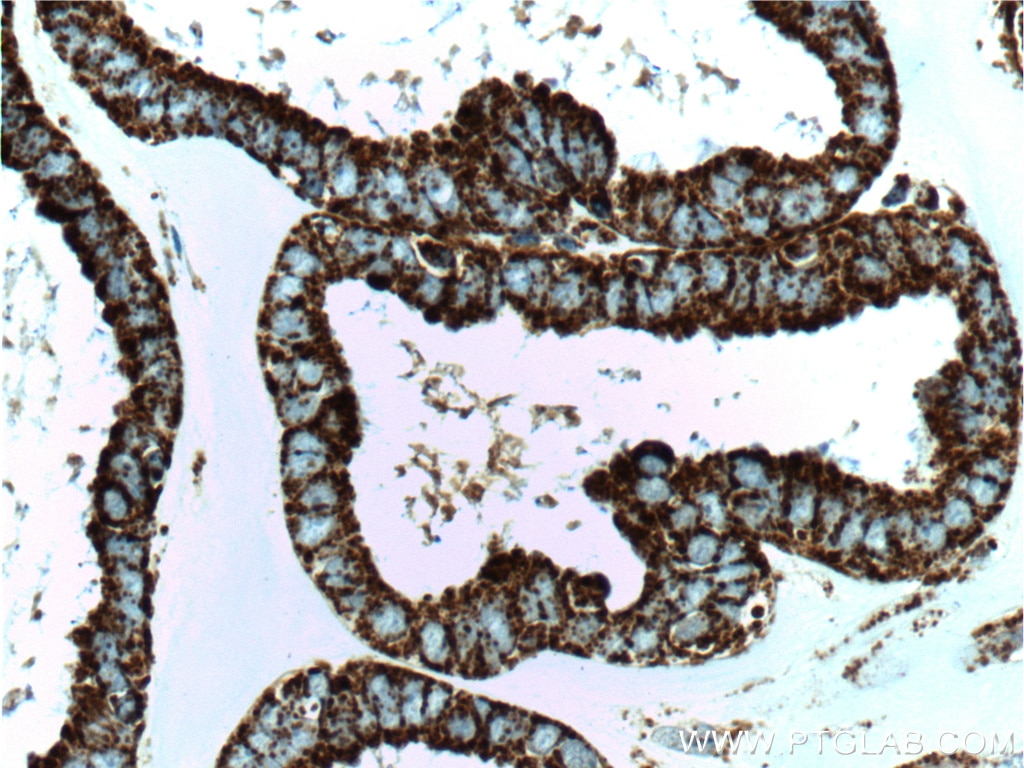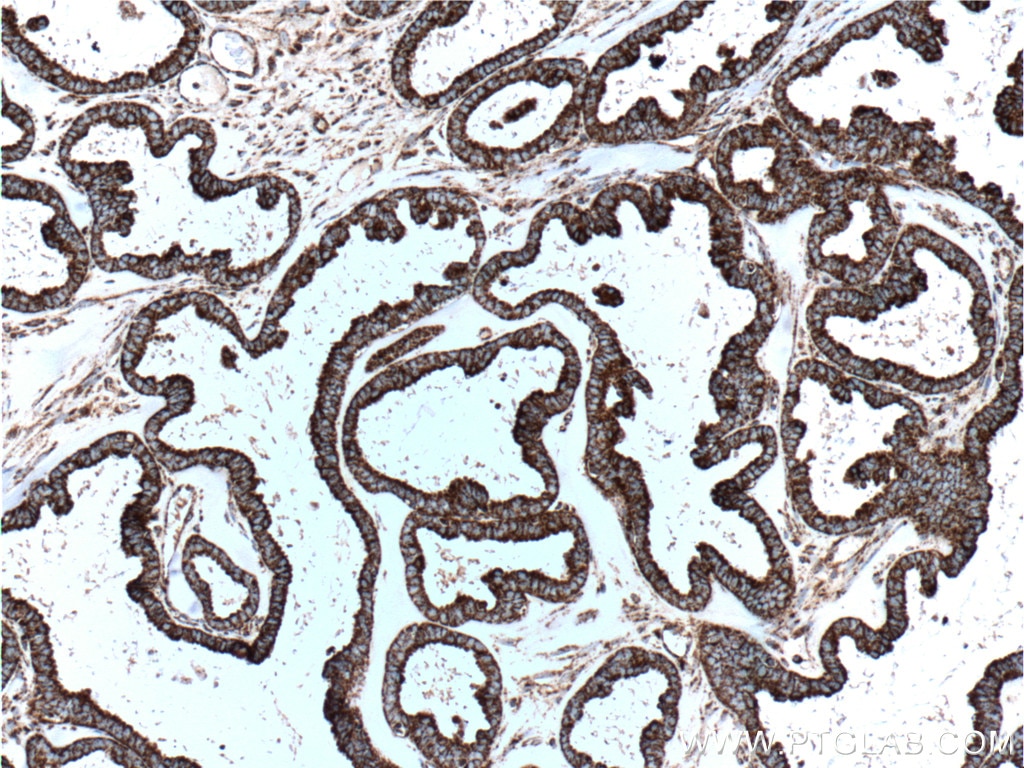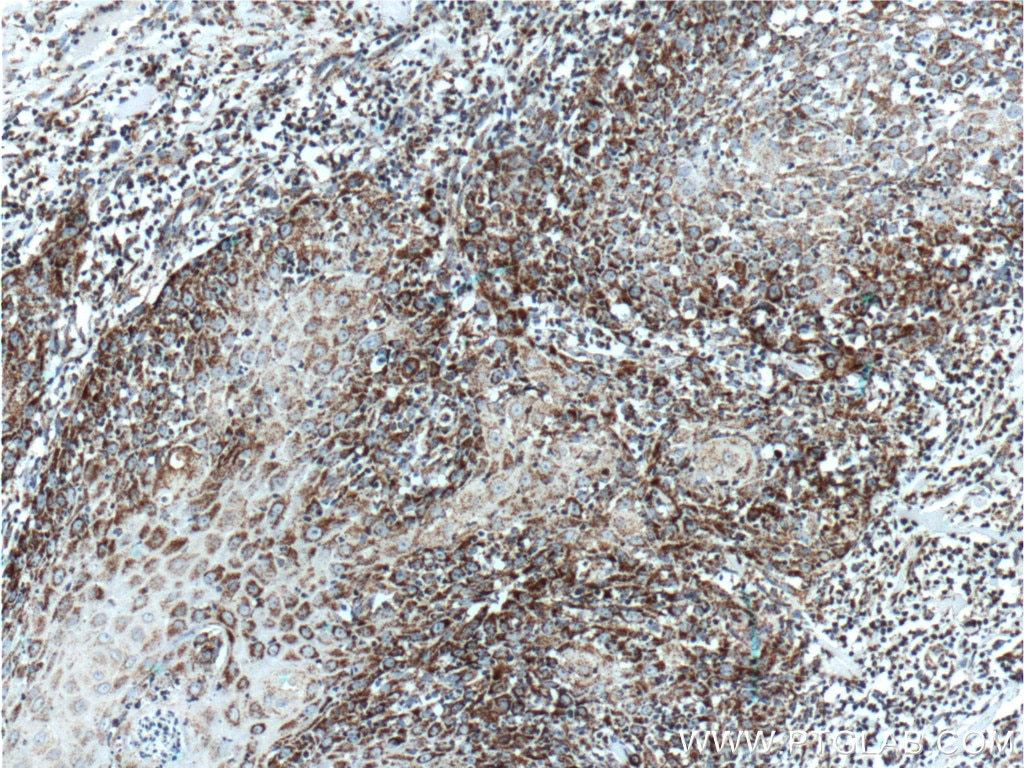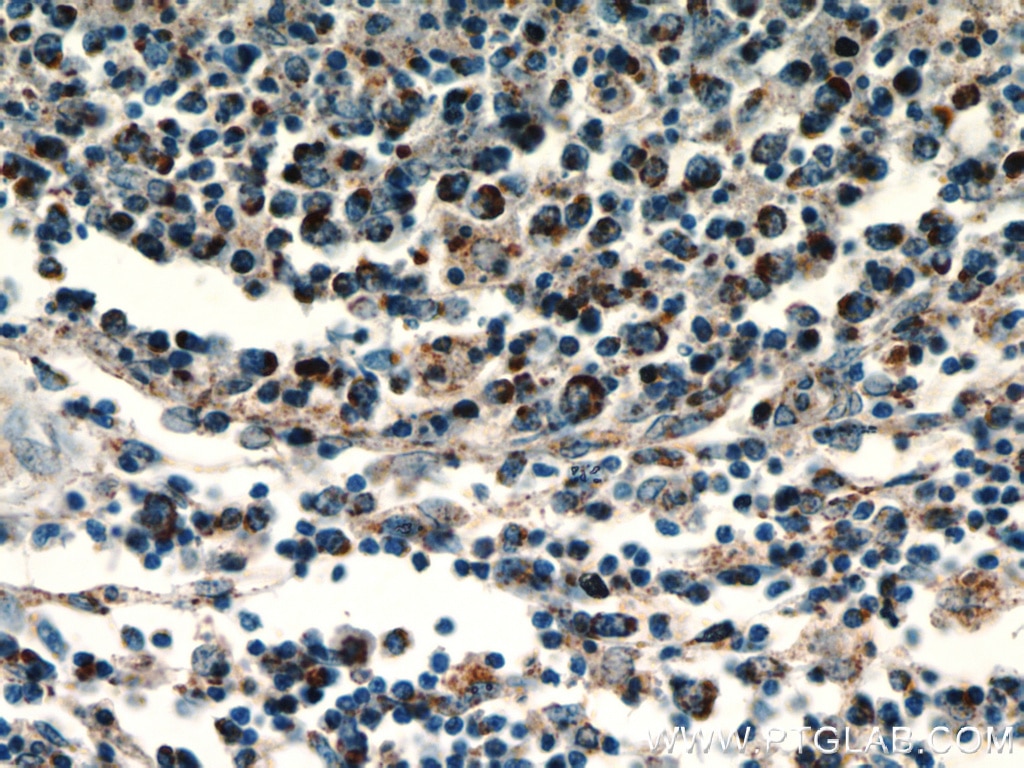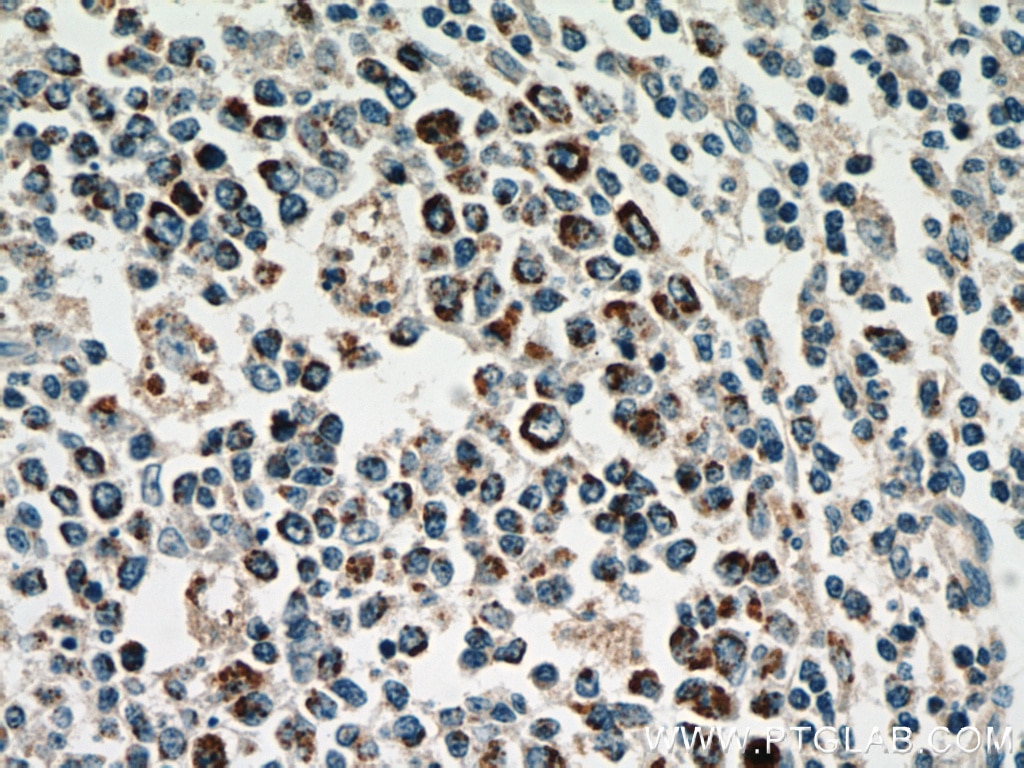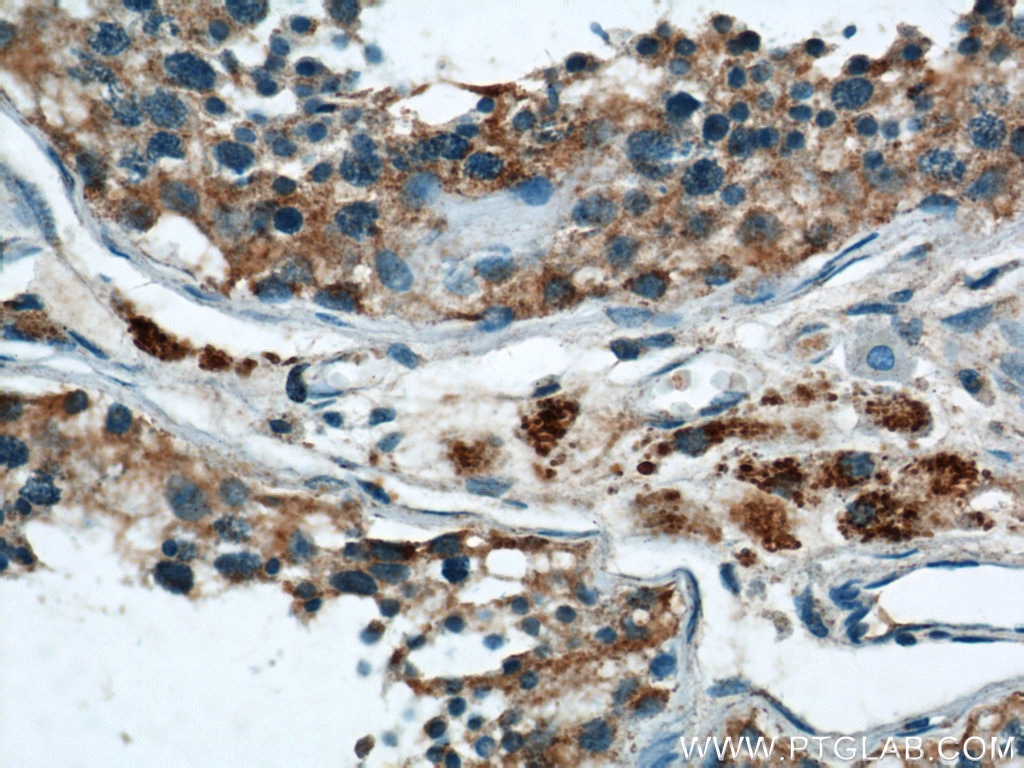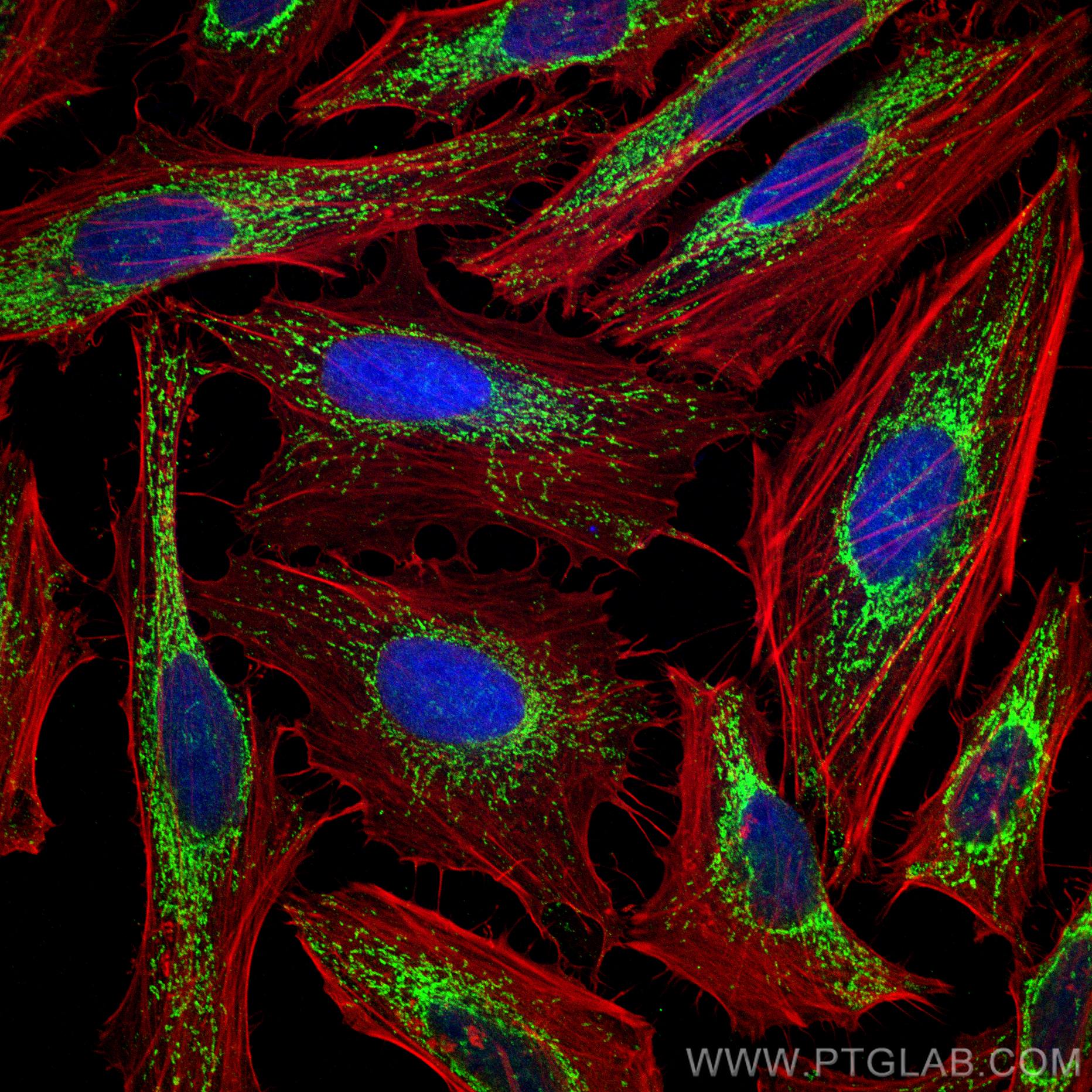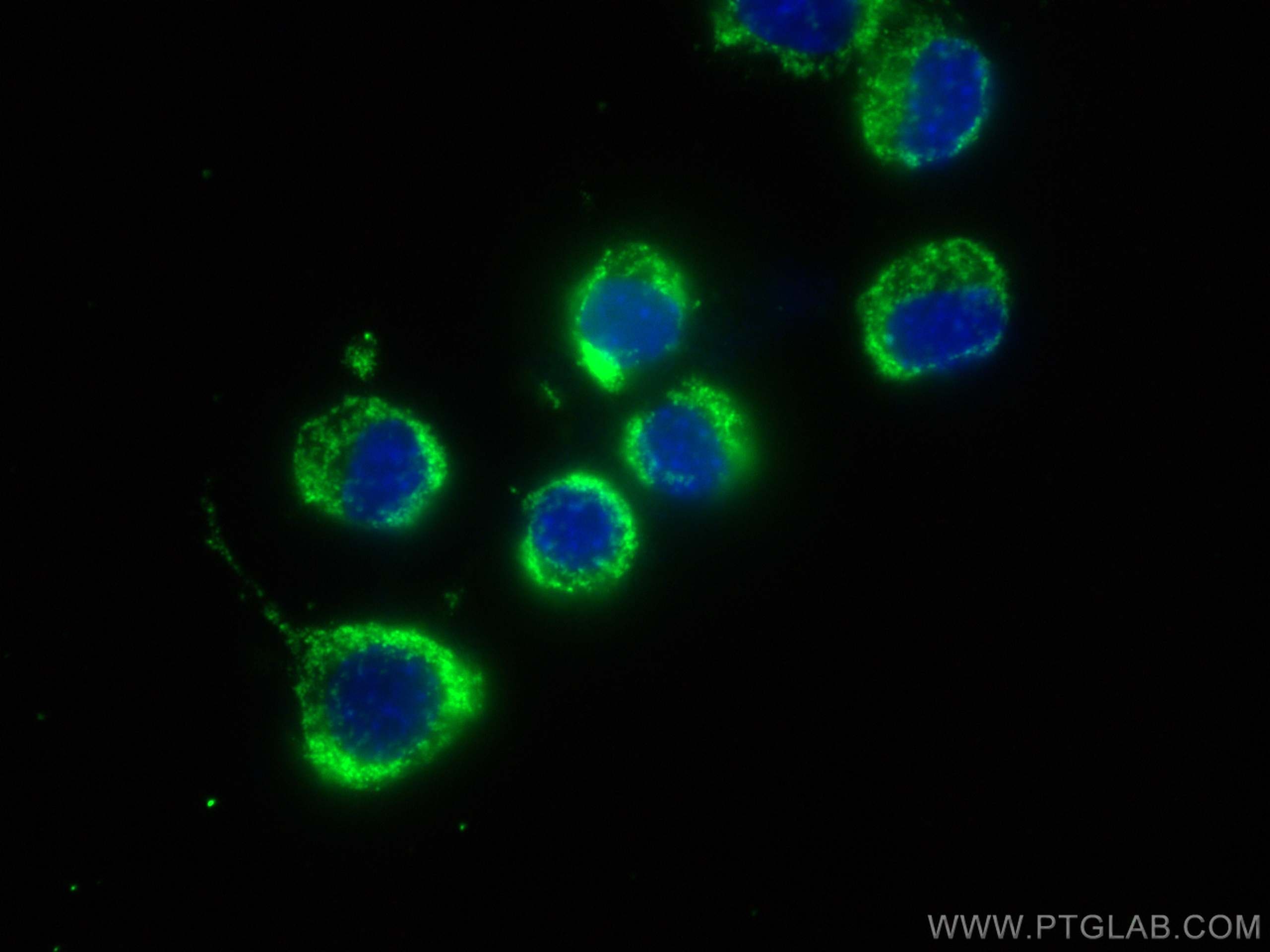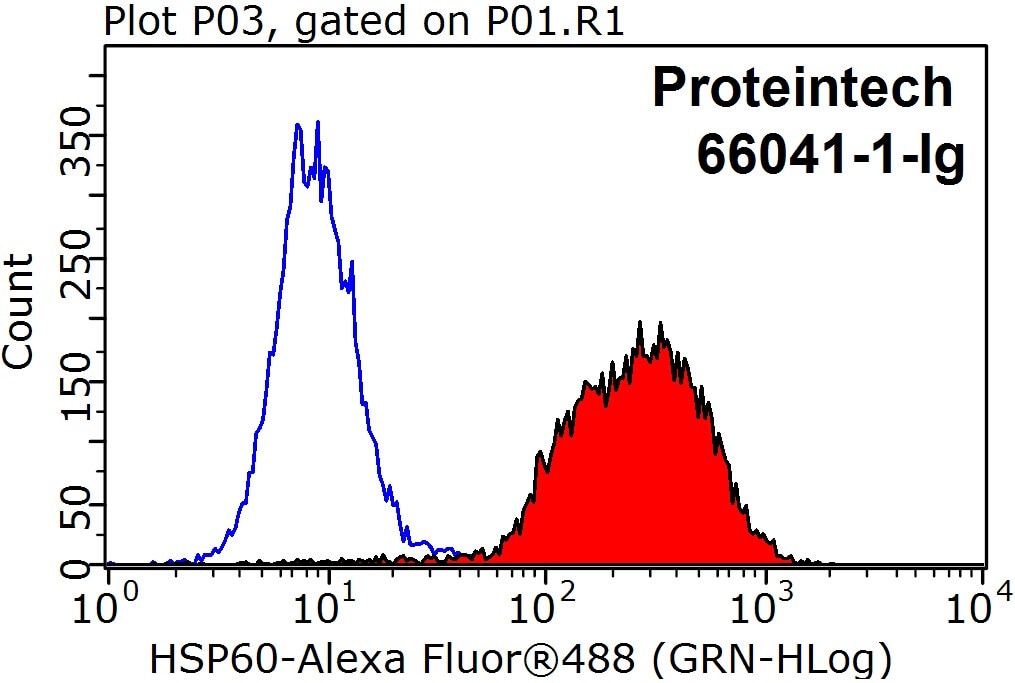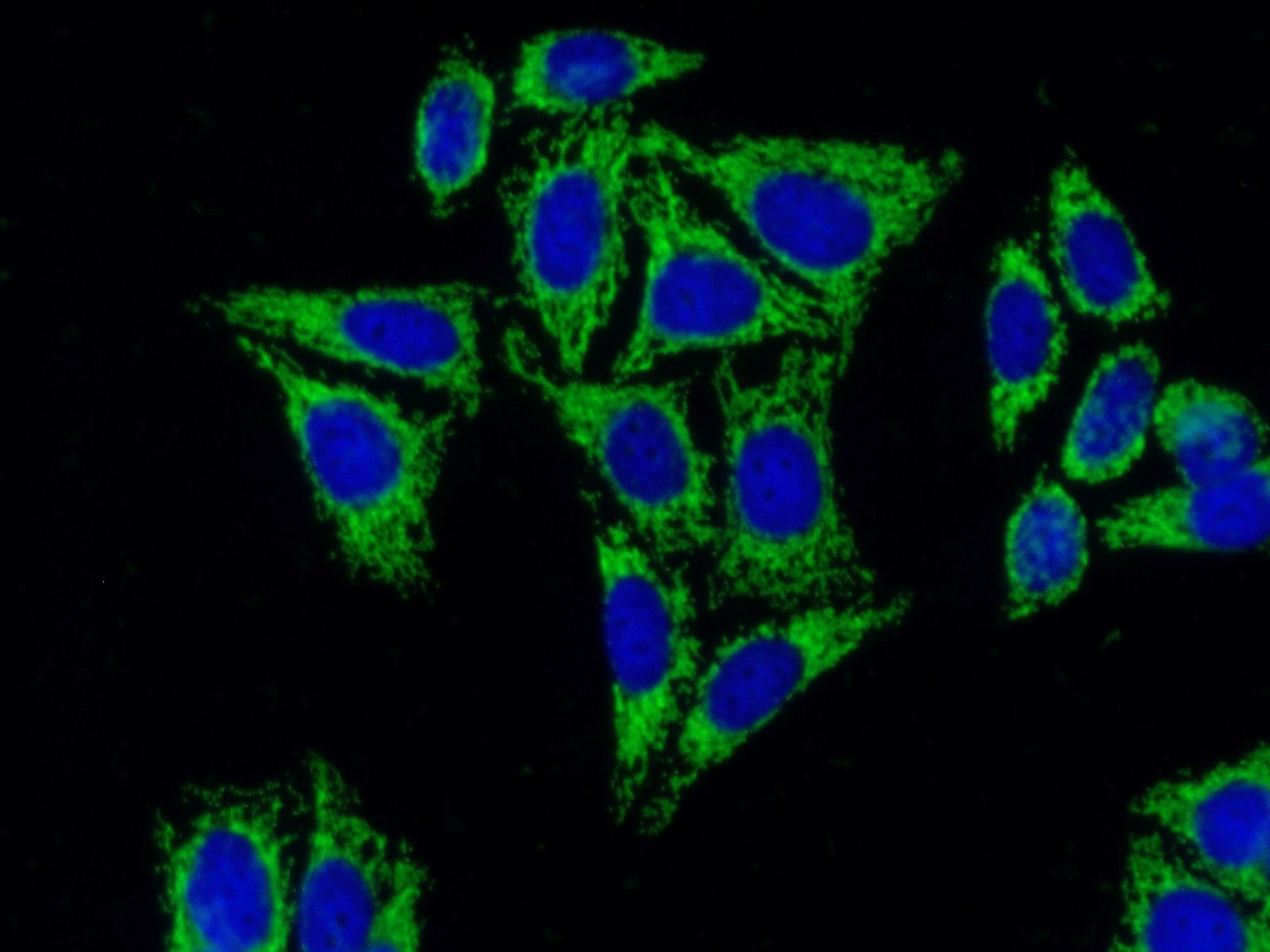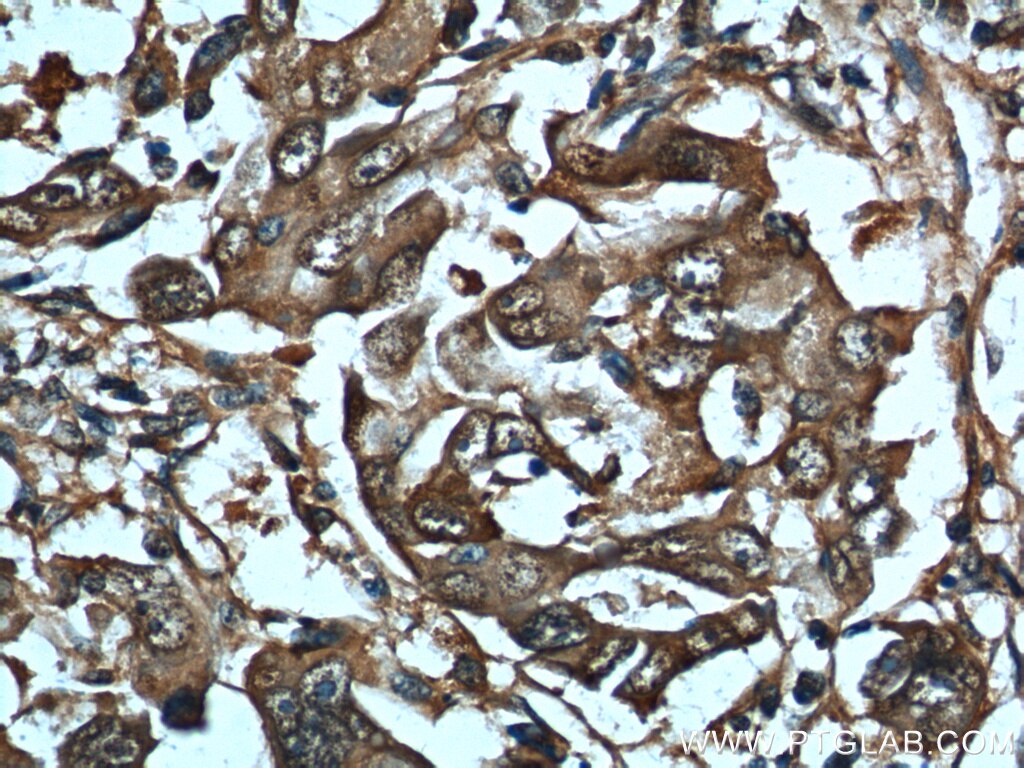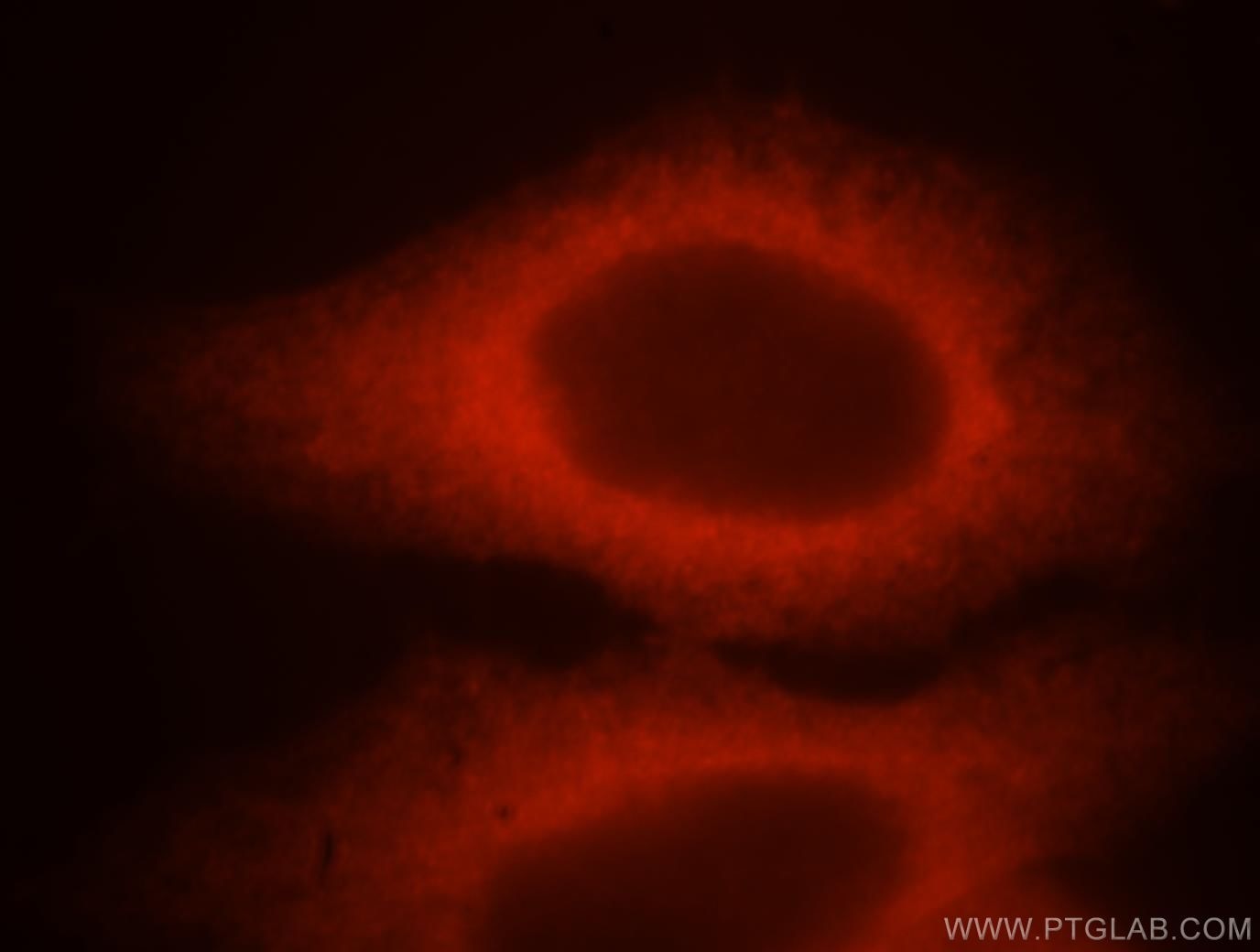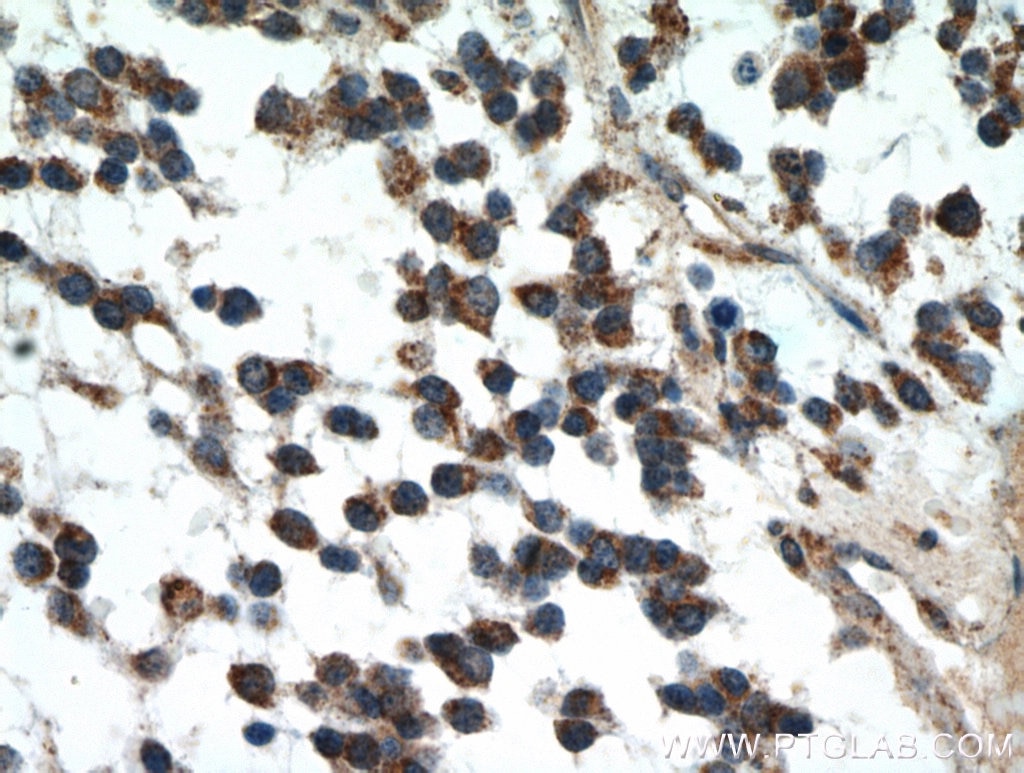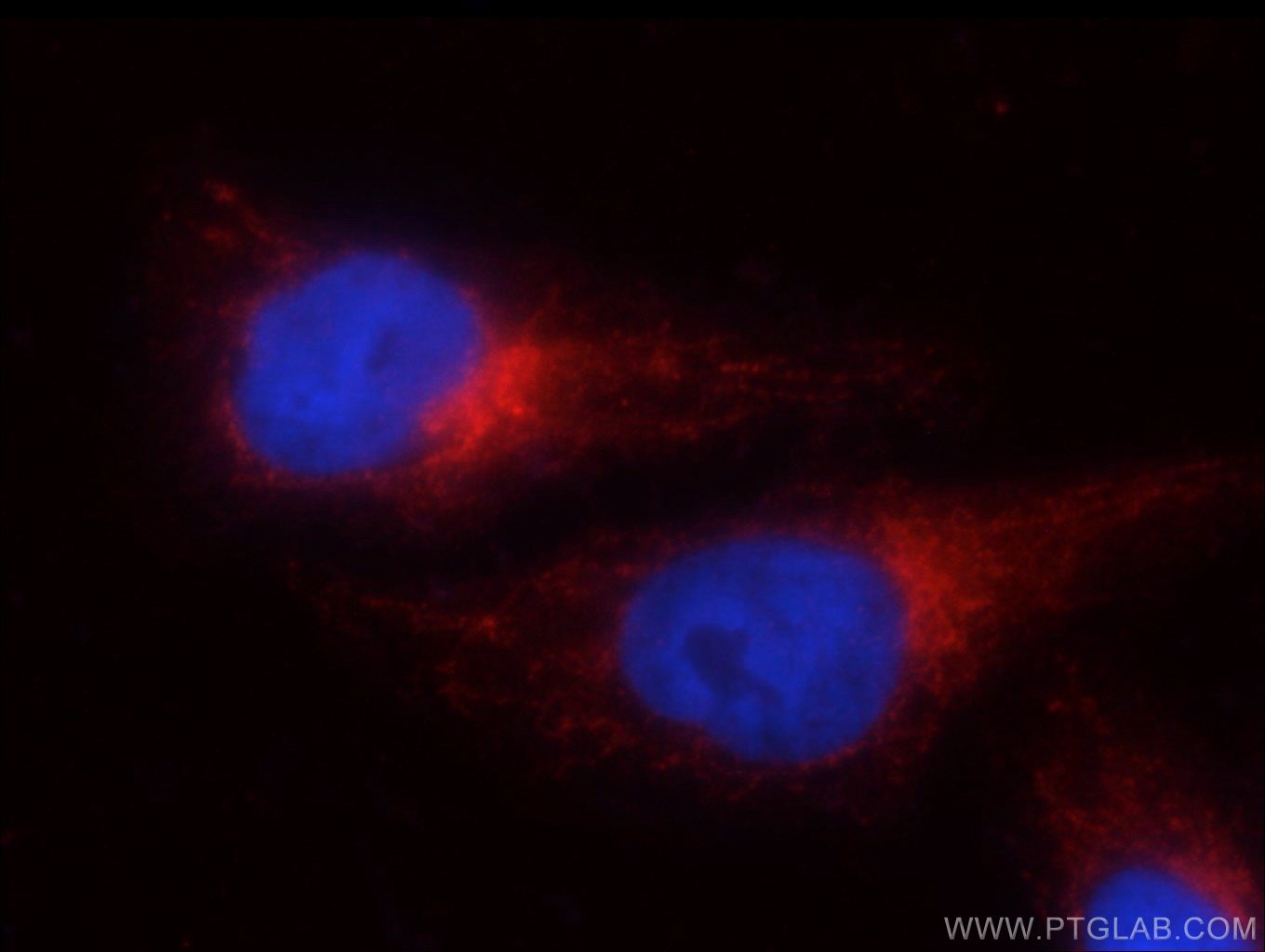Anticorps Monoclonal anti-HSP60
HSP60 Monoclonal Antibody for FC, IF, IHC, IP, WB, ELISA
Hôte / Isotype
Mouse / IgG1
Réactivité testée
Humain, rat, souris et plus (2)
Applications
WB, IP, IHC, IF, FC, ELISA
Conjugaison
Non conjugué
CloneNo.
2F10E7
N° de cat : 66041-1-Ig
Synonymes
Galerie de données de validation
Applications testées
| Résultats positifs en WB | cellules HeLa, cellules HEK-293, cellules HSC-T6, cellules Jurkat, cellules NIH/3T3, cerveau de lapin, cerveau de porc, cerveau de poulet |
| Résultats positifs en IP | tissu hépatique de souris |
| Résultats positifs en IHC | tissu de tumeur ovarienne humain, tissu d'amygdalite humain, tissu de cancer de la peau humain, tissu splénique humain, tissu testiculaire humain il est suggéré de démasquer l'antigène avec un tampon de TE buffer pH 9.0; (*) À défaut, 'le démasquage de l'antigène peut être 'effectué avec un tampon citrate pH 6,0. |
| Résultats positifs en IF | cellules HeLa, cellules Neuro-2a |
| Résultats positifs en cytométrie | cellules HeLa, |
Dilution recommandée
| Application | Dilution |
|---|---|
| Western Blot (WB) | WB : 1:5000-1:50000 |
| Immunoprécipitation (IP) | IP : 0.5-4.0 ug for 1.0-3.0 mg of total protein lysate |
| Immunohistochimie (IHC) | IHC : 1:50-1:2000 |
| Immunofluorescence (IF) | IF : 1:50-1:500 |
| Flow Cytometry (FC) | FC : 0.20 ug per 10^6 cells in a 100 µl suspension |
| It is recommended that this reagent should be titrated in each testing system to obtain optimal results. | |
| Sample-dependent, check data in validation data gallery | |
Applications publiées
| KD/KO | See 3 publications below |
| WB | See 23 publications below |
| IF | See 14 publications below |
| IP | See 2 publications below |
| ELISA | See 1 publications below |
Informations sur le produit
66041-1-Ig cible HSP60 dans les applications de WB, IP, IHC, IF, FC, ELISA et montre une réactivité avec des échantillons Humain, rat, souris
| Réactivité | Humain, rat, souris |
| Réactivité citée | rat, Humain, levure, porc, souris |
| Hôte / Isotype | Mouse / IgG1 |
| Clonalité | Monoclonal |
| Type | Anticorps |
| Immunogène | HSP60 Protéine recombinante Ag7848 |
| Nom complet | heat shock 60kDa protein 1 (chaperonin) |
| Masse moléculaire calculée | 61 kDa |
| Poids moléculaire observé | 60 kDa |
| Numéro d’acquisition GenBank | BC003030 |
| Symbole du gène | HSPD1 |
| Identification du gène (NCBI) | 3329 |
| Conjugaison | Non conjugué |
| Forme | Liquide |
| Méthode de purification | Purification par protéine A |
| Tampon de stockage | PBS avec azoture de sodium à 0,02 % et glycérol à 50 % pH 7,3 |
| Conditions de stockage | Stocker à -20°C. Stable pendant un an après l'expédition. L'aliquotage n'est pas nécessaire pour le stockage à -20oC Les 20ul contiennent 0,1% de BSA. |
Informations générales
HSPD1, also known as HSP60, belongs to the chaperonin family and acts as a chaperone to enhance cell survival under physiological stresses. Hsp60 has been shown to be connected with many aspects of cell functions such as protein folding and assembling of polypeptide chains in mitochondria. Recently it has been reported that HSP60 is associated with apoptosis or inhibition of cancer cell growth. (21822415)
Protocole
| Product Specific Protocols | |
|---|---|
| WB protocol for HSP60 antibody 66041-1-Ig | Download protocol |
| IHC protocol for HSP60 antibody 66041-1-Ig | Download protocol |
| IF protocol for HSP60 antibody 66041-1-Ig | Download protocol |
| IP protocol for HSP60 antibody 66041-1-Ig | Download protocol |
| FC protocol for HSP60 antibody 66041-1-Ig | Download protocol |
| Standard Protocols | |
|---|---|
| Click here to view our Standard Protocols |
Publications
| Species | Application | Title |
|---|---|---|
Nat Med The inhibition of TDP-43 mitochondrial localization blocks its neuronal toxicity. | ||
Nat Immunol Kinases Mst1 and Mst2 positively regulate phagocytic induction of reactive oxygen species and bactericidal activity. | ||
J Clin Invest ATM inhibition enhances cancer immunotherapy by promoting mtDNA leakage/cGAS-STING activation. | ||
Autophagy Increased mitophagy protects cochlear hair cells from aminoglycoside-induced damage. | ||
Autophagy Mycobacterium bovis induces mitophagy to suppress host xenophagy for its intracellular survival. |
